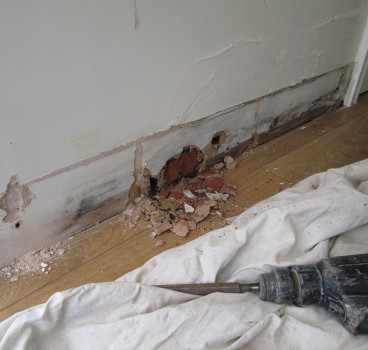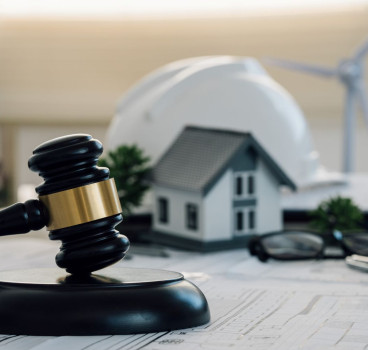The Most Energy-Efficient Retrofit Options for Commercial and Residential Buildings
Today's construction industry is intensely focused on sustainability and energy efficiency, especially as energy costs rise and professionals are met with stricter building codes.
Retrofitting existing structures reduces utility costs for building managers and homeowners while adhering to evolving compliance measures. For construction professionals, prioritizing these upgrades offers greater long-term value, boosts building performance and enhances your reputation in a green market.
Why Adapt Commercial and Residential Buildings for Future Climate?
The built environment is responsible for 40% of the world's energy consumption and significantly contributes to greenhouse gas emissions. Energy-focused retrofits seek to reduce climate change impacts by improving performance and efficiency.
Without intervention, global temperatures will increase by 2.5° to 4.5° Celsius — 4.5° to 8° Fahrenheit — by 2100. Failure to mitigate this phenomenon will melt snowpacks and glaciers, raise sea levels, increase the prevalence of inland flooding and lead to more extreme heatwaves.
The effects will be especially dire for vulnerable populations, reducing food security and increasing the disease burden. In Africa, 75 to 250 million people may endure worsening water stress from prolonged droughts.
Energy efficiency benefits building managers and homeowners through lower operating costs, enhanced comfort and higher property values. Commercial spaces have the added benefit of greater rental income and occupancy, tenant retention and positive public perception.
6 Ways to Retrofit Existing Structures for Energy Efficiency
The construction industry plays a critical role in achieving climate resilience. By retrofitting existing commercial and residential structures for enhanced energy efficiency, you can help offset the consequences.
Install Energy-Efficient Windows and Doors
Energy-efficient windows and doors prevent air leaks and avoid heating and cooling waste. Advanced windows usually have double—or triple-glazed glass, metal or metallic oxide low-emissivity coatings, insulating gas between the panes, reflective surfaces and low-conductivity edges.
Although costlier than standard windows, these have a much lower carbon footprint, allowing you to save 50 to 300 gallons of gasoline for every single-pane window you replace.
Upgrade to High-Performance Insulation
Spray foam, rigid foam boards or mineral wool insulation are high-performance options for boosting a building's thermal envelope. High-performance insulation decreases heat loss by minimizing the transfer of heat and limiting frequent use of HVAC systems.
With this retrofit, residential and commercial structures see immediate energy efficiency and comfort improvement. According to one study, cooling energy demand decreases by 18% to 28% when energy-efficient windows and updated insulation are combined.
Seal and Upgrade Building Envelope
Weatherstripping the building envelope is a cost-effective way to save energy by locking in air. Address moisture, mold and rot to ensure structural integrity over the long term.
Also, repair missing roof shingles, especially on older homes or commercial spaces. When properly maintained, asphalt shingles have a 20 to 30-year lifespan, while metal roofs last 40 to 70 years. Although it's a more expensive retrofit, homeowners can increase their home value by 15% and see a 20% to 50% return on investment.
Modernize HVAC Systems with Smart Controls
Electricity and heat consumption account for 18% of a building's carbon emissions. Integrating advanced controls, such as programmable thermostats and smart technologies, lowers the need for constant HVAC operations.
Smart thermostats enable you to manage indoor temperatures from a smartphone, tablet or computer. These systems run over Wi-Fi, where you can access controls and features through an app. Energy Star-rated thermostats, in particular, can save people $100 on their utility bills annually.
Implement LED Lighting and Advanced Controls
Swapping out incandescent light bulbs for light-emitting diodes reduces energy use by 75%, making them an easy upgrade for homeowners and building managers. They also last 25 times longer than conventional bulbs, eliminating waste from recurring replacements.
LEDs don't contribute to a building's heat, whereas incandescent bulbs release nearly 90% of their energy. This means occupants can remain comfortable with the lights on.
Integrate Renewable Energy Solutions
Renewable energy is a cornerstone of building energy efficiency, with solar deployments growing at a 28% annual rate over the past decade. Currently, the U.S. has 255 gigawatts of solar capacity, generating enough power for 43 million homes.
Tax incentives have made solar more cost-effective for homeowners and commercial buildings, allowing individuals to save money and reduce emissions.
Prioritizing Retrofits for Maximum Impact
Construction professionals can optimize the commercial and residential sectors with energy-efficient upgrades, partnering with energy auditors or retrofit specialists for more tailored solutions. You can become a prominent leader in driving sustainable building for a more climate-resilient future.
Additional Blogs

How construction can cut Its carbon footprint by caring for soil
Soil is often dismissed as mere dirt, but it is one of the planet’s most powerful carbon stores, holding more than all of the world’s forests combined. Yet in our rush to build, pave and develop, we...
Read moreWhat is bridging damp? How it happens and how to fix it
Bridging damp happens when moisture finds a path around the building’s damp-proof course (DPC) so it reaches your internal walls and skirting. If you see damp patches rising above the skirting or...
Read more

The silent death of the fixed-price contract
For decades, the fixed-price contract has been the backbone of construction procurement. It promised certainty with a defined scope, an agreed sum and a clear transfer of risk from client to...
Read more